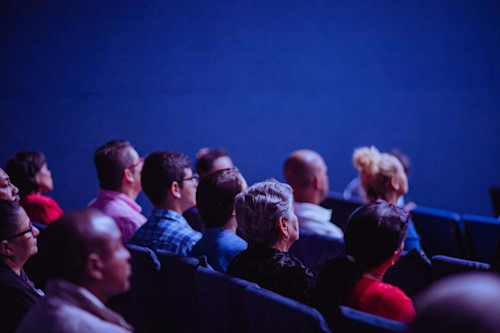06/24/2025
Our Top 7 Takeaways from the 2025 AIA Conference on Architecture and what it Means for Architects Today

At Amber Book, we always look forward to the annual AIA Conference on Architecture. We love meeting engaged emerging professionals at networking events, learning from interesting leaders in the field during continuing education sessions, and seeing what manufacturers and AEC tech companies are up to on the expo floor. Plus experiencing the built environment of the host city! It’s a great trip to reenergize yourself and reengage with the profession.
Now that we’re back home and have had time to digest all the things we learned and saw at AIA25 in Boston, here are our top 7 takeaways:
Arrive early and stay late - Arriving before the conference starts gives you a chance to get to know the city a little bit, adjust, settle in, and catch the first educational sessions on Wednesday. One of the best things about the AIA conference is the opportunity to explore the urban texture of a place you might not be familiar with - and the best chance to do that is while everyone else is still packing their suitcase! Note: attending the conference can be expensive, though there is a discount for AIA members, so plan to get up early and stay up late - sessions start at 7 AM and end around 5 PM - but the best networking often happens during after-hours events that run until 8:30 or 9.
Take a tour - the people who lead tours at the AIA convention are really passionate and knowledgeable, and it’s one of the best opportunities to meet other built environment nerds. If you’re early in your career, tours are a great opportunity to network with the professionals you want to meet, too! This year, we toured South End and experienced how Boston has grown into what were its harbors over the past 200 years, and got to see behind the scenes at the Diller, Scofidio, & Renfro Institute for Contemporary Art building right on Boston Harbor! All while earning HSW continuing education credit.
Go to the keynotes - hear from leaders in their fields and gain some sense of what AIA national leadership thinks will be important for the profession. This year, artificial intelligence and its application in architecture was a frequent thread. Thursday’s keynote illustrated different ways AI systems can be leveraged to improve workflows and deliverables, on Friday, Pete Buttigeg challenged the profession to use thoughtful design to make serious impact in their communities, and on Saturday, Dami Lee, founder of Nollistudio showed the value of communicating architectural ideas to a broader audience.
Go to seminars - We have enjoyed panel discussions in the past, but have found that a prepared presentation tells a full story and has enough time for deep dives that are more useful to building understanding. The professional development sessions are a good place to learn techniques and tips from practitioners across the country to handle situations that arise during design and construction. Don’t miss out on Saturday sessions either! Bryan Lee, NOMA, FAIA, 2025-26 NOMA president had the penultimate timeslot of the entire convention for “Architecture and the Resegregation of America”. Bryan started with the powerful story of Roderick Woodward, a black postal worker who moved to a white suburb in New Jersey in the 1960s, and the experiences he had in the first weeks after moving into the home he would live in for the next 30 years. Roderick was Brian’s great-grandfather. Bryan challenged architects to act in ways that make their communities better and more open, to enable and encourage memory and culture. Bryan spoke about communication as a way of making better places.
Wear comfy walking shoes, bring a water bottle, and dress for the climate. It’s an intense week, and if you’re used to sitting at your desk, dress for a few 15,000 step days to get the most out of your attendance. The trade show floor is always several acres, at the Boston convention it was nearly a quarter-mile from one end to the other, and the hosting rooms for CE are spread out all around it. It’s critical to be prepared to walk, a lot! It’s worth it, too, though - it’s not often that by walking a quarter-mile you can get a sense of what is happening in the built environment all over the country!
Book early. The best tours sell out quickly, and having a close hotel makes for a much easier week. Sneaking back for a quick shower or a much-needed nap is a lot easier when your bedroom is just around the corner!
Spend at least a couple hours at the Expo - See new products and experience their capabilities, and learn how they might be useful in your work. Grab some swag, too! Do you need an extra pair of socks from stepping in a puddle on the tour? Forget your water bottle? Plan to replace it from the expo floor!
A bonus tip - Come see us! Amber Book always has a busy booth and we like to think we stay ahead of the curve for trade-show giveaways. We love meeting folks thinking about licensure, studying for licensure, those who have been licensed for awhile, or those that are recently licensed who we get to celebrate! See you in San Diego in 2026!

For many architecture firms, continuing education is seen as a compliance necessity–something to check off a l...Read More

Continuing education (CE) is essential to an architect’s professional journey. It supports architects through ...Read More

While on a 14-month military deployment, Captain Chad Pentecost hatched an ambitious plan: pass all six ARE ex...Read More